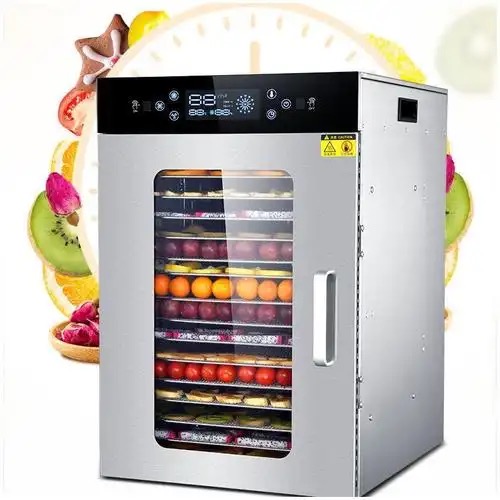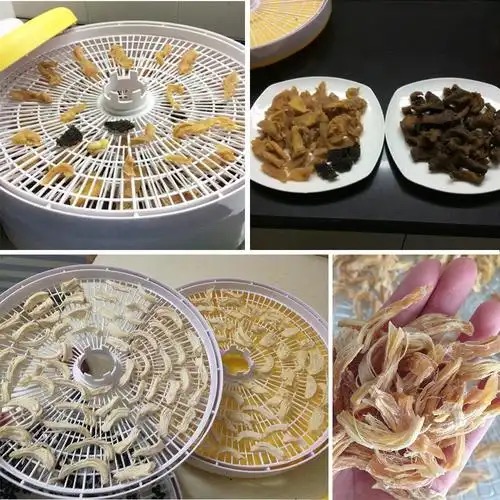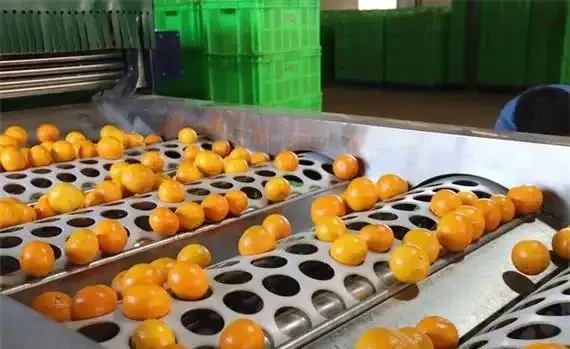
Content Menu
● Introduction
● What is Food Drying?
● Benefits of Food Drying
● Types of Food Dryers
>> Electric Food Dehydrators
>> Solar Food Dryers
>> Oven Drying
>> Microwave Drying
● How Food Dryers Work
● Choosing the Right Food Dryer
● Tips for Effective Food Drying
>> Prepare Food Properly
>> Monitor Drying Times
>> Store Dried Food Correctly
● Common Mistakes in Food Drying
>> Overloading the Dryer
>> Incorrect Temperature Settings
>> Ignoring Food Safety Guidelines
● Conclusion
● FAQs
>> 1. What foods can be dried?
>> 2. How long does it take to dry food?
>> 3. Can I dry food without a dehydrator?
>> 4. What is the best temperature for drying food?
>> 5. How do I store dried food properly?
Introduction
Food drying is an ancient preservation method that has stood the test of time. It involves removing moisture from food to inhibit the growth of bacteria, yeasts, and molds, thereby extending its shelf life. In today's fast-paced world, food drying has gained renewed interest as people seek healthier, preservative-free snacks. This article explores the various aspects of food drying, including its benefits, methods, and tips for success.

What is Food Drying?
Food drying is the process of removing moisture from food items, which helps to preserve them for longer periods. Historically, this method was essential for survival, allowing people to store food for winter months or during times of scarcity. Today, food drying is not only a practical solution for preservation but also a way to create delicious snacks like dried fruits, jerky, and vegetable chips.
Benefits of Food Drying
The benefits of food drying are numerous. First and foremost, it preserves the nutrients in food, making it a healthy option for snacking. Dried fruits and vegetables retain most of their vitamins and minerals, providing a concentrated source of nutrition. Additionally, dried foods have a significantly extended shelf life, often lasting for months or even years when stored properly. This convenience makes them ideal for camping, hiking, or simply as a pantry staple.
Types of Food Dryers
There are several methods for drying food, each with its advantages and disadvantages:
Electric Food Dehydrators
These appliances are designed specifically for drying food. They provide consistent heat and airflow, making them one of the most efficient methods for drying fruits, vegetables, and meats.
Solar Food Dryers
Utilizing the sun's energy, solar dryers are an eco-friendly option. They are best suited for regions with ample sunlight and can produce excellent results, although drying times may vary based on weather conditions.
Oven Drying
A conventional oven can be used for drying food, but it requires careful monitoring to prevent cooking the food instead of drying it. This method is less energy-efficient compared to dedicated dehydrators.
Microwave Drying
While not commonly used for large batches, microwaves can effectively dry small amounts of food quickly. However, this method may not yield the best texture or flavor.
How Food Dryers Work
Food dryers operate by circulating warm air around the food, which evaporates moisture. The key factors in this process are temperature and airflow. Most food dryers maintain a temperature between 130°F to 160°F (54°C to 71°C), which is ideal for drying without cooking the food. Proper airflow ensures that moisture is continuously removed, preventing spoilage.

Choosing the Right Food Dryer
When selecting a food dryer, consider factors such as capacity, features, and price. Larger models can handle more food at once, which is beneficial for those who plan to dry in bulk. Look for features like adjustable temperature settings, timers, and easy-to-clean trays. Popular models include the Excalibur and Nesco dehydrators, known for their reliability and performance.
Tips for Effective Food Drying
To achieve the best results when drying food, follow these tips:
Prepare Food Properly
Wash and slice fruits and vegetables evenly to ensure uniform drying. Blanching certain vegetables before drying can help preserve color and nutrients.
Monitor Drying Times
Different foods require varying drying times. For example, fruits may take 6-12 hours, while meats can take 8-12 hours. Regularly check for doneness.
Store Dried Food Correctly
Once dried, store food in airtight containers in a cool, dark place to maintain freshness. Vacuum sealing can further extend shelf life.
Common Mistakes in Food Drying
Avoid these common pitfalls to ensure successful food drying:
Overloading the Dryer
Packing too much food into the dryer can impede airflow, leading to uneven drying. Always follow the manufacturer's guidelines for load capacity.
Incorrect Temperature Settings
Using the wrong temperature can result in under-dried or overcooked food. Familiarize yourself with the ideal temperatures for different types of food.
Ignoring Food Safety Guidelines
Always adhere to food safety practices, such as washing hands and surfaces, to prevent contamination.
Conclusion
Food drying is a valuable skill that not only helps preserve food but also allows for the creation of delicious snacks. With the right equipment and techniques, anyone can enjoy the benefits of dried fruits, vegetables, and meats. Whether you're looking to save money, reduce waste, or simply enjoy healthy snacks, food drying is an excellent option to explore.

FAQs
1. What foods can be dried?
Most fruits, vegetables, herbs, and meats can be dried. Popular choices include apples, bananas, tomatoes, and beef jerky.
2. How long does it take to dry food?
Drying times vary based on the type of food and the method used. Generally, fruits take 6-12 hours, while meats can take 8-12 hours.
3. Can I dry food without a dehydrator?
Yes, you can use an oven, microwave, or solar dryer to dry food, although these methods may not be as efficient.
4. What is the best temperature for drying food?
Most foods dry best at temperatures between 130°F to 160°F (54°C to 71°C).
5. How do I store dried food properly?
Store dried food in airtight containers in a cool, dark place. Vacuum sealing can help extend shelf life.












